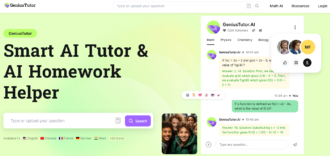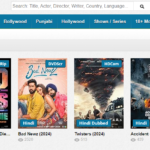A+ Lab Reports Made Easy: Writing Help Services
- 1 Tips to follow to get the Assignment Done
- 1.1 Add abstract
- 1.2 Focus on structure
- 1.3 Be precise
- 1.4 Keep it presentable
- 1.5 Cite in the end
- 1.6 Edit for clarity
- 2 Mistakes in lab report writing
- 2.1 Lack of Clarity in Purpose and Objectives
- 2.2 Inadequate Background Information
- 2.3 Poorly Defined Hypotheses
- 2.4 Incomplete Experimental Procedures
- 2.5 Unclear Presentation of Data
- 2.6 Neglecting Statistical Analysis
- 2.7 Overlooking Results Interpretation
- 2.8 Ignoring Error Analysis
- 2.9 Incomplete Conclusion
- 2.10 Inadequate Citations and References
The task of writing a lab report is quite a time-consuming process. This calls for endless research and can often prove to be frustrating. But no matter how tough it is, some students have no option but to finish it.
While some resort to MyAssignmentHelp.expert, others find ways to do it independently. If you fall in the latter category, then here are some tips to follow:
Tips to follow to get the Assignment Done

Add abstract
One of the major requirements for lab reports is an abstract. Abstracts are not mandatory, but they can only improve the clarity of the work. In short, the abstract describes the purpose of your report.
Here are some of the questions assignment expert believe you can answer through the lab report:
- Why are you making this report?
- What are the results and final observations?
- Meaning of the results with detailed discussion.
- Your contribution towards the topic?
Focus on structure
Lab reports come with a definite structure, too. Here is how the general structure goes:
- Title.
- Abstract.
- Introduction.
- Materials used.
- Methodology.
- Results.
- Discussions.
- Conclusion.
- References.
This is the lab report outline for any topic. Ensure you are breaking the body as per the format, or you can face serious consequences. The inability to follow this structure can result in reworks. Overall, this looks unprofessional and does not cater to accurate lab reports.
Be precise
With lab reports, you need to be very precise. There is scope for assumption, but you must validate this with accurate figures and data. You need to mention the accurate measurements, correct apparatus, and ingredients in your experiments. This can be a useful source for others.
Errors in this area can be regarded as discredited. Make sure your reports are precise and always double-check them in the end.
Keep it presentable
Lab reports can also be presentable. Although they may seem full of numbers and statements, it is possible to make them visually pleasing. Some ways of making them presentable are by adding graphs, charts, polls, and images that resonate with your topic.
It keeps the paper visually appealing because readers read from their eyes first. If you are lacking inspiration, then get help from others. You can also go through similar papers to ignite and implement new ideas in your work.
Cite in the end
In the end, do not forget to cite your paper. While writing lab reports, it is quite common for students to use references from other papers. Taking inspiration is not wrong, but not citing it can lead to plagiarism issues. Statistics show that 90% of students do not cite their papers which is wrong. Plagiarism occurs when one does not give any credit to the original writer.
To avoid this, cite your sources. Also, different citation styles have different citation rules, so ensure you follow the correct one. If not, mistakes in citation can be fatal.
Edit for clarity
In the end, editing is always the primary task. It would be best if you still edited, regardless of your confidence in your writing and figures. This adds more clarity to the paper and eliminates any chances of errors.
Edit silly mistakes, fillers, and areas that do not contribute to the topic. To make your paper unique, keep it crisp and professional. Ask friends and family to guide you if you doubt your editing skills. While reviewing your paper, they can suggest meaningful ideas to upgrade the quality.
These were all the tips on how to write an excellent lab report. Below, we have some of the mistakes to look out for and solutions to rectify them.
Mistakes in lab report writing
Lack of Clarity in Purpose and Objectives
Mistake: Failing to state the purpose and objectives of the experiment clearly.
Solution: In the introduction, clearly articulate the goals of the experiment. Define the problem you’re addressing and the specific objectives of the investigation.
Inadequate Background Information
Mistake: Provide insufficient background information about the experiment or theory.
Solution: Include enough background information for readers to understand the context of the experiment. This helps establish the rationale for the study.
Poorly Defined Hypotheses
Mistake: Writing vague or unclear hypotheses.
Solution: Formulate clear and testable hypotheses. Clearly state the expected outcomes and the variables involved in the experiment.
Incomplete Experimental Procedures
Mistake: Leaving out crucial details in the experimental procedures.
Solution: Provide a step-by-step guide to the experimental procedures. Mention materials used, measurements taken, and conditions maintained during the experiment. This allows for reproducibility.
Unclear Presentation of Data
Mistake: Presenting data in a confusing or disorganized manner.
Solution: Organize data logically using tables, graphs, and figures. Label axes, include legends, and provide units of measurement. Ensure your data presentation is easily understandable without referring to the methods section excessively.
Neglecting Statistical Analysis
Mistake: Failing to perform statistical analysis on the data.
Solution: Analyze and report your data using appropriate statistical methods. Include measures of central tendency, variability, and statistical tests as needed.
Overlooking Results Interpretation
Mistake: Providing results without interpreting their significance.
Solution: Discuss the meaning of your results. Explain any trends or patterns observed and relate them to your hypotheses. Address any unexpected outcomes and consider their implications.
Ignoring Error Analysis
Mistake: Neglecting to discuss sources of error or uncertainties in the experiment.
Solution: Acknowledge potential sources of error and uncertainties in your experimental setup. Discuss how these factors may have influenced your results and suggest improvements for future experiments.
Incomplete Conclusion
Mistake: Writing a conclusion that merely restates results.
Solution: Summarize the key findings and their implications. Discuss the broader significance of the results and suggest areas for further research.
Inadequate Citations and References
Mistake: Failing to cite sources or references properly.
Solution: Cite all sources of information, including previous studies or theories that influenced your experiment. Follow a consistent citation style (APA, MLA, etc.) as required.
Hopefully, these tops will be enough for you to write a good lab report. Keep practicing, and you will finally quickly develop the art of writing good lab reports.

















